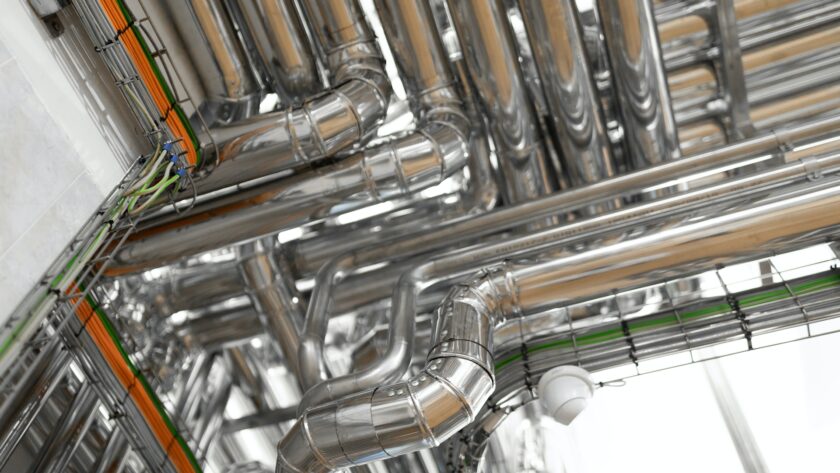Tube bending is one of the critical manufacturing technologies for lightweight product forming. It is widely used in aviation, aerospace, automobile, energy, health care, and shipbuilding industries.
Performance tube bending has many advantages, especially compared to traditional bending techniques. These include:
Precision
Tube bending is a metal forming process to bend a metal tubing permanently. The bending process can be form-bound or free-form, and the resulting products depend on the tube type, tooling, lubrication, and bending geometry.
A hollow tube made from metal can be round, square, rectangular, or oval. It is used for various applications, including structural, pressure equipment, and instrumentation systems.
In a typical pipe bending process, a clamp dies, and a pressure die is used to secure the tubing to be bent. Next, a rotating die, roller, or press turns the tube.
Precision in this machining procedure combines the materials, tooling, lubrication, pressure, and bending geometry. Common bend shapes include L-bend, U-bend, S-bend, and coil bend.
Various other bending methods are also available, such as heat induction bending. This process uses a heated induction coil to gently push the tube until it meets the desired bend shape. The working temperature of the metal depends on the material, ranging from 430degC – 1,200degC.
Another method is compression bending. This technique is a cost-effective way to bend circular hollow sections but isn’t suitable for forming tubes with small CLRs and may cause the outside surface of the tubing to flatten slightly.
Finally, rotary draw bending is a popular method that uses an internal mandrel to hold the tubing while it bends. This method can produce precise bends with a constant CLR and a consistent diameter, producing minimal ovalization. This technique is often used in tube fittings, instrument tubing, handrails, and automotive and aerospace parts.
Accuracy
Tubes and pipes are critical components of industrial fluid systems. They convey liquids, gasses, and other materials essential to production. They come in many shapes and sizes, including round, square, rectangular, and oval.
Performing tube bending involves specialized machinery designed to bend tubes into a desired shape and size. These machines can be manual or machine-controlled, using heat or cold to shape the material.
One of the critical aspects of performance tube bending is the accuracy of the results. The degree of accuracy depends on the bending process and other factors, such as the wall thickness and the tube material.
Another critical factor is the K-factor. This value determines the feasibility of a bending process, as it reflects the physical changes that the tube experiences during bending.
The outside diameter and the tube’s wall thickness determine the K-factor and consider the bend radius. The K-factor is essential because it helps fabricators choose the proper mandrel and dies to create the bend.
Using a mandrel ensures that the shape of the tube is controlled during a bend, allowing for precise control of the radii and length of the box. The resulting line is more uniform, contributing to higher efficiency and productivity. It can also reduce the amount of time required to manufacture a pipe, as well as improve quality and consistency.
Efficiency
Tube bending offers significant cost-effectiveness, production, and system performance benefits. Material costs, procurement storage, and the costs of tube fabrication services are reduced by economizing the number of fittings and connection points. In addition, smooth internal surfaces help to reduce flow losses and pressure drops and increase system performance.
Bending a tube starts with loading it into the bender and clamping it between the clamping block and the forming die. Then, the line is drawn past the forming die and through the pressure die. This bending method is much more effective than compression bending because it avoids collapsing the tube.
In addition, draw bending is much more precise than compression bending because it can bend tubes with very tight radii. The bending process is also faster, which helps to reduce production cycle times.
It’s essential to select a bender capable of handling the complex requirements of high-end tube fabrication in an industrial application. This includes machine design, bending performance, geometric measurements, tool installation space, and software that aligns with the fabricator’s specific processes.
Many OEMs and tube fabricators respond to relentless cost pressure by seeking machines tailored to their needs. They need machines that can handle sophisticated tube bending applications and reduce cycle time. A well-designed machine can cut the time spent on a bend, making an enormous difference in productivity.
Safety
Tube bending is an essential part of many industrial projects, and the process must be performed accurately to ensure that the finished product complies with all specifications. The bending procedure can lead to serious system failures if errors occur.
Fortunately, performance tube bending machines are designed to ensure the finished product is made safely. For example, these tools have safety grid systems that allow the operator to monitor the perimeter of the work area and stop the machine if someone or something passes by.
Another safety feature is a sensor that can detect when the tool has been struck, making it possible to avoid accidents. This is important for ensuring the safety of workers and preventing injuries caused by the bending device.
Quality control devices are also essential for preventing damage to the tool and maximizing the efficiency of a bending operation. These include cameras that monitor the process to ensure the proper orientation of the weld seam and that all parts meet the required tolerances.
This helps to prevent damage, and it also reduces waste. Moreover, a high-quality tube bending process can save significant time and money for industrial projects. This is because it decreases the need for manual labor, cuts down on waste, and increases the accuracy of the finished product.




